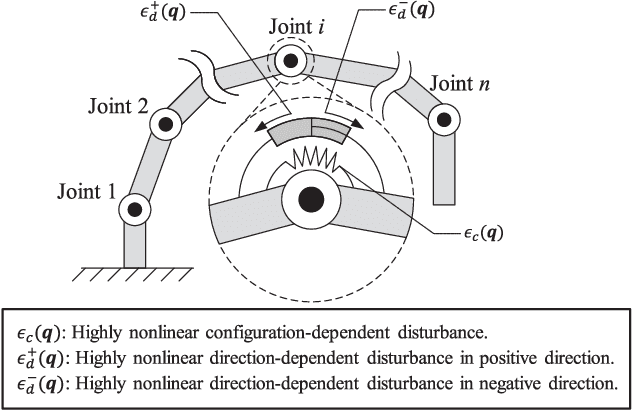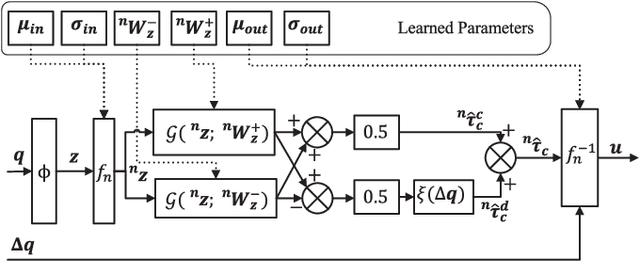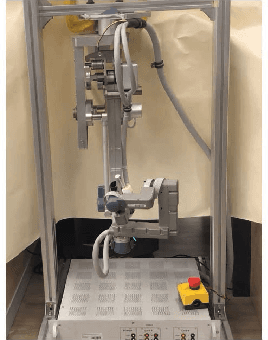Hongbin Lin
Graph-Guided Dual-Level Augmentation for 3D Scene Segmentation
Jul 30, 2025Abstract:3D point cloud segmentation aims to assign semantic labels to individual points in a scene for fine-grained spatial understanding. Existing methods typically adopt data augmentation to alleviate the burden of large-scale annotation. However, most augmentation strategies only focus on local transformations or semantic recomposition, lacking the consideration of global structural dependencies within scenes. To address this limitation, we propose a graph-guided data augmentation framework with dual-level constraints for realistic 3D scene synthesis. Our method learns object relationship statistics from real-world data to construct guiding graphs for scene generation. Local-level constraints enforce geometric plausibility and semantic consistency between objects, while global-level constraints maintain the topological structure of the scene by aligning the generated layout with the guiding graph. Extensive experiments on indoor and outdoor datasets demonstrate that our framework generates diverse and high-quality augmented scenes, leading to consistent improvements in point cloud segmentation performance across various models.
DriveGEN: Generalized and Robust 3D Detection in Driving via Controllable Text-to-Image Diffusion Generation
Mar 14, 2025



Abstract:In autonomous driving, vision-centric 3D detection aims to identify 3D objects from images. However, high data collection costs and diverse real-world scenarios limit the scale of training data. Once distribution shifts occur between training and test data, existing methods often suffer from performance degradation, known as Out-of-Distribution (OOD) problems. To address this, controllable Text-to-Image (T2I) diffusion offers a potential solution for training data enhancement, which is required to generate diverse OOD scenarios with precise 3D object geometry. Nevertheless, existing controllable T2I approaches are restricted by the limited scale of training data or struggle to preserve all annotated 3D objects. In this paper, we present DriveGEN, a method designed to improve the robustness of 3D detectors in Driving via Training-Free Controllable Text-to-Image Diffusion Generation. Without extra diffusion model training, DriveGEN consistently preserves objects with precise 3D geometry across diverse OOD generations, consisting of 2 stages: 1) Self-Prototype Extraction: We empirically find that self-attention features are semantic-aware but require accurate region selection for 3D objects. Thus, we extract precise object features via layouts to capture 3D object geometry, termed self-prototypes. 2) Prototype-Guided Diffusion: To preserve objects across various OOD scenarios, we perform semantic-aware feature alignment and shallow feature alignment during denoising. Extensive experiments demonstrate the effectiveness of DriveGEN in improving 3D detection. The code is available at https://github.com/Hongbin98/DriveGEN.
PiSA: A Self-Augmented Data Engine and Training Strategy for 3D Understanding with Large Models
Mar 13, 2025Abstract:3D Multimodal Large Language Models (MLLMs) have recently made substantial advancements. However, their potential remains untapped, primarily due to the limited quantity and suboptimal quality of 3D datasets. Current approaches attempt to transfer knowledge from 2D MLLMs to expand 3D instruction data, but still face modality and domain gaps. To this end, we introduce PiSA-Engine (Point-Self-Augmented-Engine), a new framework for generating instruction point-language datasets enriched with 3D spatial semantics. We observe that existing 3D MLLMs offer a comprehensive understanding of point clouds for annotation, while 2D MLLMs excel at cross-validation by providing complementary information. By integrating holistic 2D and 3D insights from off-the-shelf MLLMs, PiSA-Engine enables a continuous cycle of high-quality data generation. We select PointLLM as the baseline and adopt this co-evolution training framework to develop an enhanced 3D MLLM, termed PointLLM-PiSA. Additionally, we identify limitations in previous 3D benchmarks, which often feature coarse language captions and insufficient category diversity, resulting in inaccurate evaluations. To address this gap, we further introduce PiSA-Bench, a comprehensive 3D benchmark covering six key aspects with detailed and diverse labels. Experimental results demonstrate PointLLM-PiSA's state-of-the-art performance in zero-shot 3D object captioning and generative classification on our PiSA-Bench, achieving significant improvements of 46.45% (+8.33%) and 63.75% (+16.25%), respectively. We will release the code, datasets, and benchmark.
Towards Multi-dimensional Explanation Alignment for Medical Classification
Oct 28, 2024



Abstract:The lack of interpretability in the field of medical image analysis has significant ethical and legal implications. Existing interpretable methods in this domain encounter several challenges, including dependency on specific models, difficulties in understanding and visualization, as well as issues related to efficiency. To address these limitations, we propose a novel framework called Med-MICN (Medical Multi-dimensional Interpretable Concept Network). Med-MICN provides interpretability alignment for various angles, including neural symbolic reasoning, concept semantics, and saliency maps, which are superior to current interpretable methods. Its advantages include high prediction accuracy, interpretability across multiple dimensions, and automation through an end-to-end concept labeling process that reduces the need for extensive human training effort when working with new datasets. To demonstrate the effectiveness and interpretability of Med-MICN, we apply it to four benchmark datasets and compare it with baselines. The results clearly demonstrate the superior performance and interpretability of our Med-MICN.
Fully Test-Time Adaptation for Monocular 3D Object Detection
May 30, 2024Abstract:Monocular 3D object detection (Mono 3Det) aims to identify 3D objects from a single RGB image. However, existing methods often assume training and test data follow the same distribution, which may not hold in real-world test scenarios. To address the out-of-distribution (OOD) problems, we explore a new adaptation paradigm for Mono 3Det, termed Fully Test-time Adaptation. It aims to adapt a well-trained model to unlabeled test data by handling potential data distribution shifts at test time without access to training data and test labels. However, applying this paradigm in Mono 3Det poses significant challenges due to OOD test data causing a remarkable decline in object detection scores. This decline conflicts with the pre-defined score thresholds of existing detection methods, leading to severe object omissions (i.e., rare positive detections and many false negatives). Consequently, the limited positive detection and plenty of noisy predictions cause test-time adaptation to fail in Mono 3Det. To handle this problem, we propose a novel Monocular Test-Time Adaptation (MonoTTA) method, based on two new strategies. 1) Reliability-driven adaptation: we empirically find that high-score objects are still reliable and the optimization of high-score objects can enhance confidence across all detections. Thus, we devise a self-adaptive strategy to identify reliable objects for model adaptation, which discovers potential objects and alleviates omissions. 2) Noise-guard adaptation: since high-score objects may be scarce, we develop a negative regularization term to exploit the numerous low-score objects via negative learning, preventing overfitting to noise and trivial solutions. Experimental results show that MonoTTA brings significant performance gains for Mono 3Det models in OOD test scenarios, approximately 190% gains by average on KITTI and 198% gains on nuScenes.
World Models for General Surgical Grasping
May 28, 2024



Abstract:Intelligent vision control systems for surgical robots should adapt to unknown and diverse objects while being robust to system disturbances. Previous methods did not meet these requirements due to mainly relying on pose estimation and feature tracking. We propose a world-model-based deep reinforcement learning framework "Grasp Anything for Surgery" (GAS), that learns a pixel-level visuomotor policy for surgical grasping, enhancing both generality and robustness. In particular, a novel method is proposed to estimate the values and uncertainties of depth pixels for a rigid-link object's inaccurate region based on the empirical prior of the object's size; both depth and mask images of task objects are encoded to a single compact 3-channel image (size: 64x64x3) by dynamically zooming in the mask regions, minimizing the information loss. The learned controller's effectiveness is extensively evaluated in simulation and in a real robot. Our learned visuomotor policy handles: i) unseen objects, including 5 types of target grasping objects and a robot gripper, in unstructured real-world surgery environments, and ii) disturbances in perception and control. Note that we are the first work to achieve a unified surgical control system that grasps diverse surgical objects using different robot grippers on real robots in complex surgery scenes (average success rate: 69%). Our system also demonstrates significant robustness across 6 conditions including background variation, target disturbance, camera pose variation, kinematic control error, image noise, and re-grasping after the gripped target object drops from the gripper. Videos and codes can be found on our project page: https://linhongbin.github.io/gas/.
UNeR3D: Versatile and Scalable 3D RGB Point Cloud Generation from 2D Images in Unsupervised Reconstruction
Dec 10, 2023Abstract:In the realm of 3D reconstruction from 2D images, a persisting challenge is to achieve high-precision reconstructions devoid of 3D Ground Truth data reliance. We present UNeR3D, a pioneering unsupervised methodology that sets a new standard for generating detailed 3D reconstructions solely from 2D views. Our model significantly cuts down the training costs tied to supervised approaches and introduces RGB coloration to 3D point clouds, enriching the visual experience. Employing an inverse distance weighting technique for color rendering, UNeR3D ensures seamless color transitions, enhancing visual fidelity. Our model's flexible architecture supports training with any number of views, and uniquely, it is not constrained by the number of views used during training when performing reconstructions. It can infer with an arbitrary count of views during inference, offering unparalleled versatility. Additionally, the model's continuous spatial input domain allows the generation of point clouds at any desired resolution, empowering the creation of high-resolution 3D RGB point clouds. We solidify the reconstruction process with a novel multi-view geometric loss and color loss, demonstrating that our model excels with single-view inputs and beyond, thus reshaping the paradigm of unsupervised learning in 3D vision. Our contributions signal a substantial leap forward in 3D vision, offering new horizons for content creation across diverse applications. Code is available at https://github.com/HongbinLin3589/UNeR3D.
Imbalance-Agnostic Source-Free Domain Adaptation via Avatar Prototype Alignment
May 22, 2023



Abstract:Source-free Unsupervised Domain Adaptation (SF-UDA) aims to adapt a well-trained source model to an unlabeled target domain without access to the source data. One key challenge is the lack of source data during domain adaptation. To handle this, we propose to mine the hidden knowledge of the source model and exploit it to generate source avatar prototypes. To this end, we propose a Contrastive Prototype Generation and Adaptation (CPGA) method. CPGA consists of two stages: Prototype generation and Prototype adaptation. Extensive experiments on three UDA benchmark datasets demonstrate the superiority of CPGA. However, existing SF.UDA studies implicitly assume balanced class distributions for both the source and target domains, which hinders their real applications. To address this issue, we study a more practical SF-UDA task, termed imbalance-agnostic SF-UDA, where the class distributions of both the unseen source domain and unlabeled target domain are unknown and could be arbitrarily skewed. This task is much more challenging than vanilla SF-UDA due to the co-occurrence of covariate shifts and unidentified class distribution shifts between the source and target domains. To address this task, we extend CPGA and propose a new Target-aware Contrastive Prototype Generation and Adaptation (T-CPGA) method. Specifically, for better prototype adaptation in the imbalance-agnostic scenario, T-CPGA applies a new pseudo label generation strategy to identify unknown target class distribution and generate accurate pseudo labels, by utilizing the collective intelligence of the source model and an additional contrastive language-image pre-trained model. Meanwhile, we further devise a target label-distribution-aware classifier to adapt the model to the unknown target class distribution. We empirically show that T-CPGA significantly outperforms CPGA and other SF-UDA methods in imbalance-agnostic SF-UDA.
End-to-End Deep Visual Control for Mastering Needle-Picking Skills With World Models and Behavior Cloning
Mar 07, 2023Abstract:Needle picking is a challenging surgical task in robot-assisted surgery due to the characteristics of small slender shapes of needles, needles' variations in shapes and sizes, and demands for millimeter-level control. Prior works, heavily relying on the prior of needles (e.g., geometric models), are hard to scale to unseen needles' variations. In addition, visual tracking errors can not be minimized online using their approaches. In this paper, we propose an end-to-end deep visual learning framework for needle-picking tasks where both visual and control components can be learned jointly online. Our proposed framework integrates a state-of-the-art reinforcement learning framework, Dreamer, with behavior cloning (BC). Besides, two novel techniques, i.e., Virtual Clutch and Dynamic Spotlight Adaptation (DSA), are introduced to our end-to-end visual controller for needle-picking tasks. We conducted extensive experiments in simulation to evaluate the performance, robustness, variation adaptation, and effectiveness of individual components of our method. Our approach, trained by 8k demonstration timesteps and 140k online policy timesteps, can achieve a remarkable success rate of 80%, a new state-of-the-art with end-to-end vision-based surgical robot learning for delicate operations tasks. Furthermore, our method effectively demonstrated its superiority in generalization to unseen dynamic scenarios with needle variations and image disturbance, highlighting its robustness and versatility. Codes and videos are available at https://sites.google.com/view/dreamerbc.
Learning Deep Nets for Gravitational Dynamics with Unknown Disturbance through Physical Knowledge Distillation: Initial Feasibility Study
Oct 04, 2022



Abstract:Learning high-performance deep neural networks for dynamic modeling of high Degree-Of-Freedom (DOF) robots remains challenging due to the sampling complexity. Typical unknown system disturbance caused by unmodeled dynamics (such as internal compliance, cables) further exacerbates the problem. In this paper, a novel framework characterized by both high data efficiency and disturbance-adapting capability is proposed to address the problem of modeling gravitational dynamics using deep nets in feedforward gravity compensation control for high-DOF master manipulators with unknown disturbance. In particular, Feedforward Deep Neural Networks (FDNNs) are learned from both prior knowledge of an existing analytical model and observation of the robot system by Knowledge Distillation (KD). Through extensive experiments in high-DOF master manipulators with significant disturbance, we show that our method surpasses a standard Learning-from-Scratch (LfS) approach in terms of data efficiency and disturbance adaptation. Our initial feasibility study has demonstrated the potential of outperforming the analytical teacher model as the training data increases.
 Add to Chrome
Add to Chrome Add to Firefox
Add to Firefox Add to Edge
Add to Edge